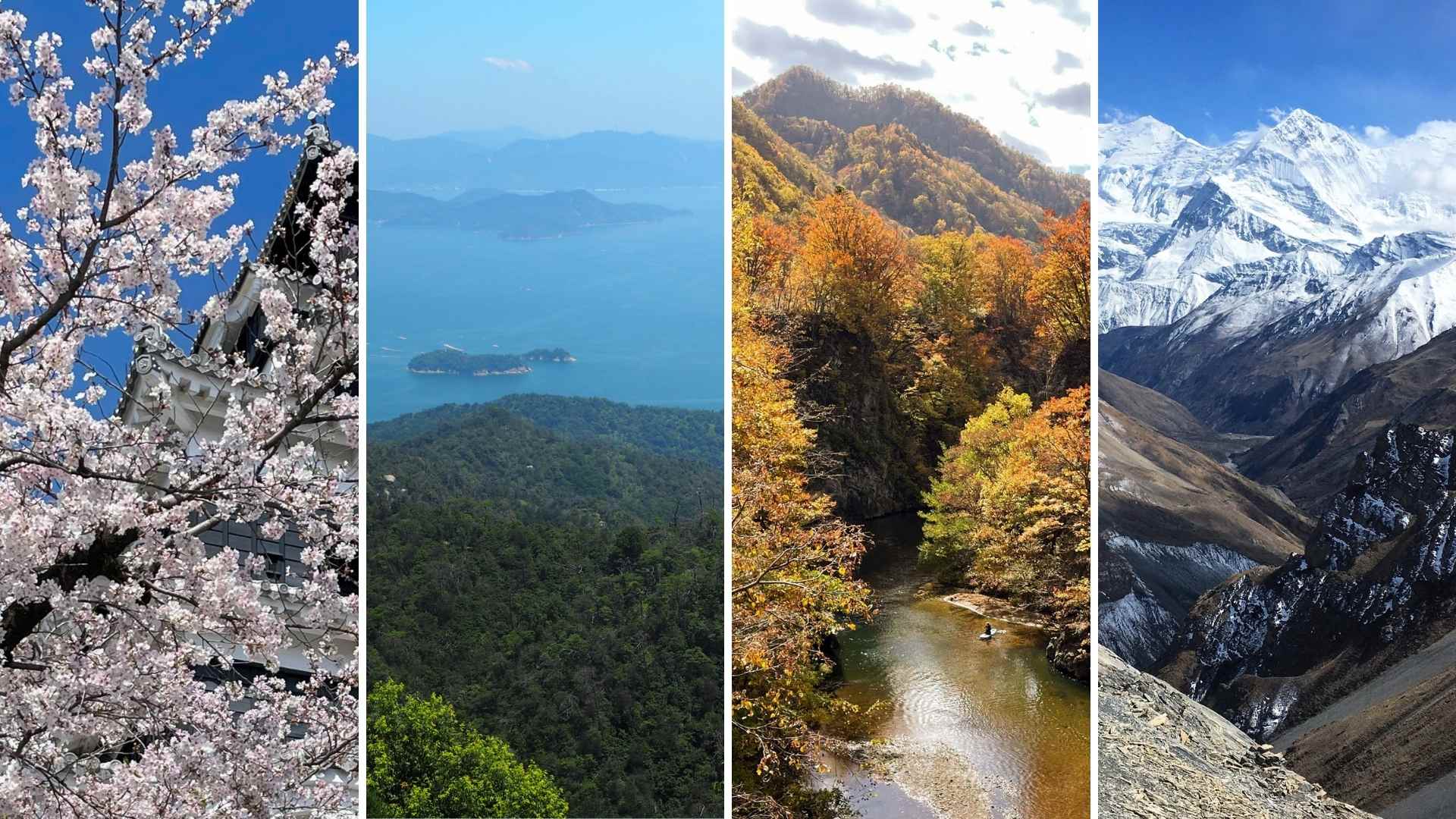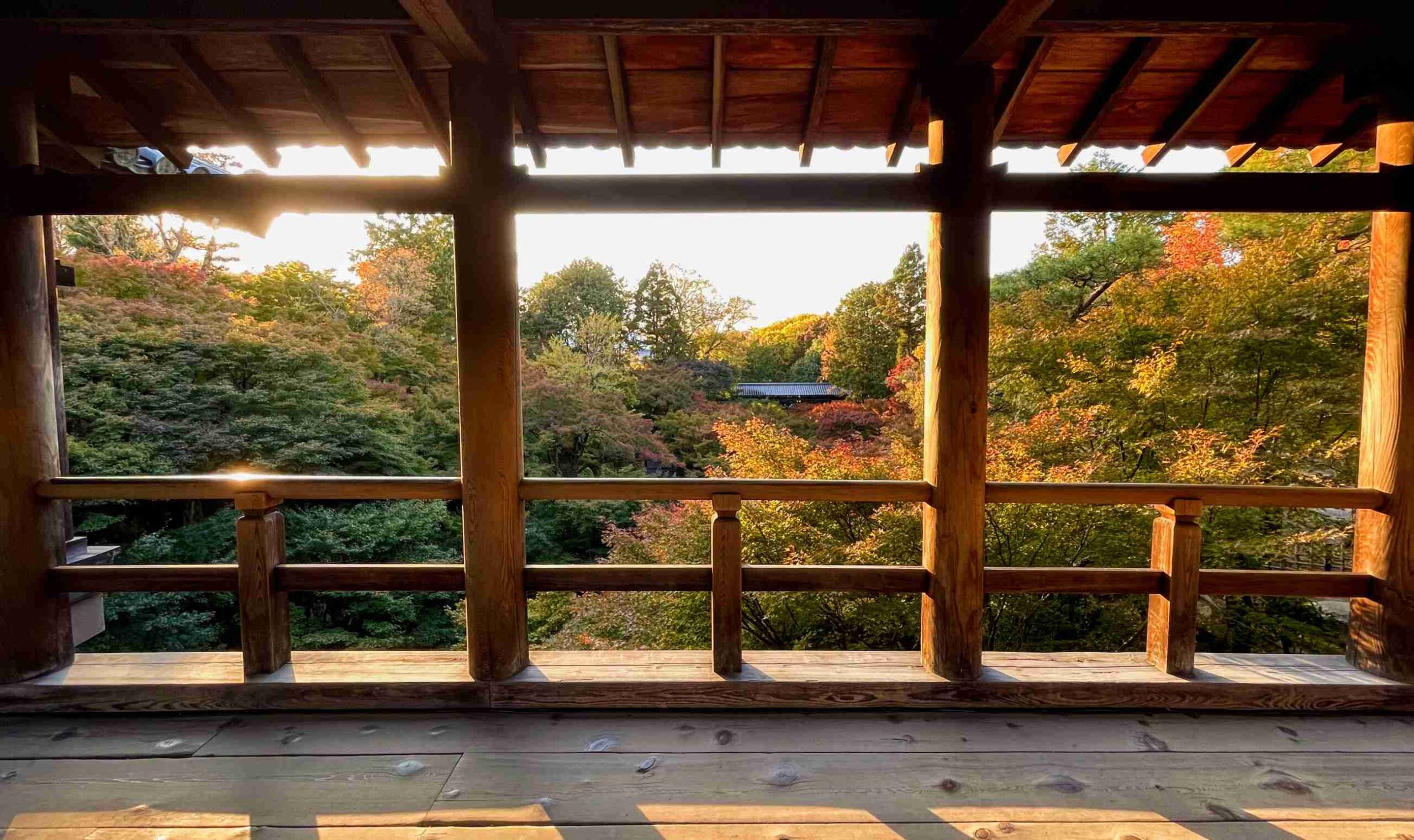The four primary seasons in Japan, summer, autumn, winter, and spring, provide a compass for living intentionally, season by season, in the inaka countryside. But did you know Japan also has microseasons?
This hyper-awareness of changing natural surroundings, including changes to temperature and humidity, and the behaviors of insects, flora and fauna, can be traced back hundreds of years when all of Japan was inaka.
The traditional Japanese seasonal calendar, which was brought to Japan via China and Korea, is categorized into 24 solar terms which includes seasonal and lunar patterns like autumn equinoxes and summer solstices. The 24 solar terms can be further broken down into 72 microseasons, with each microseason lasting about five days.
Just as the 24 solar terms mark the rhythm of changing seasons throughout the year, the 72 microseasons bring attention to the tiniest shifts in daily life, like the first call of a cicada in the summer, the scent of new flowers in the spring, or the sign of winter’s first cool breeze. These “seasonal signs” remind us that nature is always in motion.
Here’s the full list of Japan’s 72 microseasons.
秋 (Autumn)
| Microseason (Kanji) | Dates | English Translation |
|---|---|---|
| 涼風至 | Aug 7 – 11 | Cool winds arrive, signalling the start of autumn |
| 寒蝉鳴 | Aug 12 – 16 | Cicadas sing their evening calls |
| 蒙霧升降 | Aug 17 – 22 | Heavy fog falls over the fields |
| 綿柎開 | Aug 23 – 27 | Cotton flowers bloom |
| 天地始粛 | Aug 28 – Sep 1 | The heat begins to subside |
| 禾乃登 | Sep 2 – 7 | Grains ripen in the fields |
| 草露白 | Sep 8 – 12 | Dew appears white on the grasses |
| 鶺鴒鳴 | Sep 13 – 17 | Wagtails sing their songs |
| 玄鳥去 | Sep 18 – 22 | Swallows depart for the south |
| 雷乃収声 | Sep 23 – 27 | Thunderstorms cease as the season cools |
| 蟄虫坏戸 | Sep 28 – Oct 2 | Insects seal themselves underground for winter |
| 水始涸 | Oct 3 – 7 | Water in fields and rivers begins to dry up |
| 鴻雁来 | Oct 8 – 12 | Wild geese return |
| 菊花開 | Oct 13 – 17 | Chrysanthemums bloom |
| 蟋蟀在戸 | Oct 18 – 22 | Crickets chirp at the doorways |
| 霜始降 | Oct 23 – 27 | The first frosts of the season appear |
| 霎時施 | Oct 28 – Nov 1 | Short, light autumn rains fall |
| 楓蔦黄 | Nov 2 – 6 | Maple leaves turn yellow and red |
冬 (Winter)
| Microseason (Kanji) | Dates | English Translation |
|---|---|---|
| 山茶始開 | Nov 7 – 11 | Camellias open their first blossoms |
| 地始凍 | Nov 12 – 16 | The ground begins to freeze |
| 金盞香 | Nov 17 – 21 | Daffodils bloom |
| 虹蔵不見 | Nov 22 – 26 | Rainbows vanish from the winter skies |
| 朔風払葉 | Nov 27 – Dec 1 | Cold north winds scatter the last leaves |
| 橘始黄 | Dec 2 – 6 | Citrus tree leaves turn yellow |
| 閉塞成冬 | Dec 7 – 11 | Winter closes in and darkness deepens |
| 熊蟄穴 | Dec 12 – 16 | Bears retreat into their dens to hibernate |
| 鱖魚群 | Dec 17 – 21 | Salmon gather and swim upriver |
| 乃東生 | Dec 22 – 26 | The self-heal plant sprouts beneath the cold |
| 麋角解 | Dec 27 – 31 | Deer shed their antlers |
| 雪下出麦 | Jan 1 – 5 | Wheat sprouts under the snow |
| 芹乃栄 | Jan 6 – 10 | Parsley and water celery flourish |
| 水泉動 | Jan 11 – 15 | Springs and rivers begin to flow again |
| 雉始雊 | Jan 16 – 20 | Pheasants start their calls |
| 款冬華 | Jan 21 – 25 | Butterbur flowers bloom |
| 水沢腹堅 | Jan 26 – 30 | Streams freeze solidly |
| 鶏始乳 | Jan 31 – Feb 3 | Hens begin laying eggs again |
春 (Spring)
| Microseason (Kanji) | Dates | English Translation |
|---|---|---|
| 東風解凍 | Feb 4 – 8 | The east wind begins to blow, melting the ice |
| 黄鶯睍睆 | Feb 9 – 13 | Bush warblers sing their first notes of spring |
| 魚上氷 | Feb 14 – 18 | Fish break through the melting ice |
| 土脉潤起 | Feb 19 – 23 | Rain moistens the soil |
| 霞始靆 | Feb 24 – 28 | Spring mist lingers |
| 草木萌動 | Mar 1 – 5 | Grass sprouts and trees begin to bud |
| 蟄虫啓戸 | Mar 6 – 10 | Insects awaken from hibernation |
| 桃始笑 | Mar 11 – 15 | Peach blossoms open |
| 菜虫化蝶 | Mar 16 – 20 | Caterpillars transform into butterflies |
| 雀始巣 | Mar 21 – 25 | Sparrows begin building their nests |
| 桜始開 | Mar 26 – 30 | Cherry blossoms bloom |
| 雷乃発声 | Mar 31 – Apr 4 | The first rumblings of spring thunder |
| 玄鳥至 | Apr 5 – 9 | Swallows return |
| 鴻雁北 | Apr 10 – 14 | Wild geese fly north |
| 虹始見 | Apr 15 – 19 | The season’s first rainbow appears |
| 葭始生 | Apr 20 – 24 | Reeds sprout along the riverbanks |
| 霜止出苗 | Apr 25 – 29 | Frosts end and rice seedlings grow |
| 牡丹華 | Apr 30 – May 4 | Peonies bloom |
夏 (Summer)
| Microseason (Kanji) | Dates | English Translation |
|---|---|---|
| 蛙始鳴 | May 5 – 9 | Frogs begin croaking |
| 蚯蚓出 | May 10 – 14 | Earthworms emerge |
| 竹笋生 | May 15 – 20 | Bamboo shoots sprout |
| 蚕起食桑 | May 21 – 25 | Silkworms wake and start feeding on mulberry leaves |
| 紅花栄 | May 26 – 30 | Safflowers bloom |
| 麦秋至 | May 31 – Jun 5 | White ripens and is harvestedn |
| 螳螂生 | Jun 6 – 10 | Praying mantises hatch |
| 腐草為蛍 | Jun 11 – 15 | Fireflies rise from the damp summer grass |
| 梅子黄 | Jun 16 – 20 | Plums ripen and turn golden |
| 乃東枯 | Jun 21 – 25 | The self-heal plant withers |
| 菖蒲華 | Jun 26 – 30 | Irises come into bloom |
| 半夏生 | Jul 1 – 6 | Crow-dipper plants sprout |
| 温風至 | Jul 7 – 11 | Warm southern winds arrive |
| 蓮始華 | Jul 12 – 16 | Lotus flowers bloom |
| 鷹乃学習 | Jul 17 – 22 | Young hawks learn to fly |
| 桐始結花 | Jul 23 – 27 | Paulownia trees begin to seed |
| 土潤溽暑 | Jul 28 – Aug 1 | The ground grows damp as heavy humidity builds |
| 大雨時行 | Aug 2 – 6 | Sudden downpours and great summer rains |
Inaka Journal on Japan’s 72 microseasons
On Inaka Journal, I’ll be reflecting on the 72 microseasons and how I experience, observe, and engage with them here on the Izu Peninsula.
This sense of the changing seasons, or kisetsukan, is something that is easy to lose sight of when living in busy cities and going about our work and school routines. These urban life cycles chug along irrespective of the changing seasons.
However, in all of us there’s an instinctive element of calm, feeling of harmony, and relaxation when we connect with nature. Whether that’s fully immersing yourself in a nature hike or a walk in the park, growing flowers on a terrace, or just stopping to admire komorebi, the sunlight that filters through tree leaves, we can all connect with nature and the seasons in different ways.
By following along, I hope you’ll feel connected to nature’s subtle rhythms, and maybe even notice similar signs of change in your own surroundings, wherever you are in the world.



